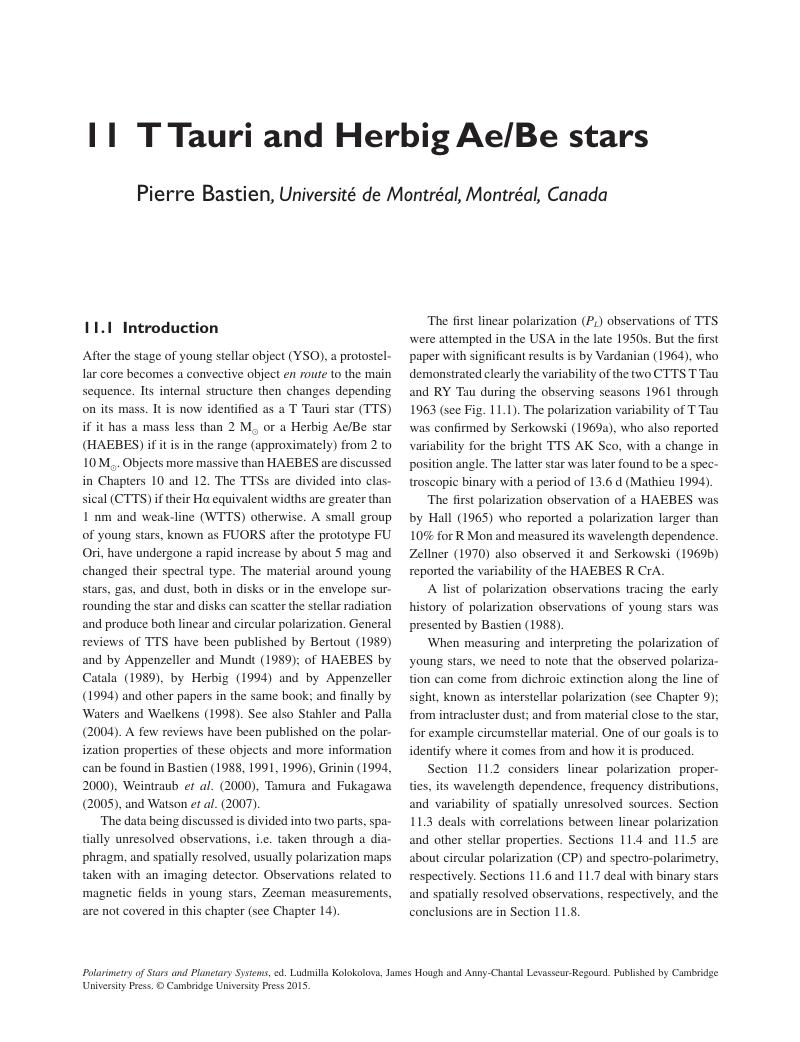Book contents
- Half title page
- Title page
- Copyright page
- Dedication
- Contents
- Contributors
- I Introduction
- II Theory, instrumentation, and laboratory studies
- III Stars and their environment
- 9 Interstellar polarization
- 10 Young stellar objects and their environment
- 11 T Tauri and Herbig Ae/Be stars
- 12 Magnetic fields in high-mass star-forming regions
- 13 Evolved stars
- 14 Stellar magnetic fields
- 15 Imaging of protoplanetary and debris disks
- IV Solar system
- V Exoplanets and exobiology
- Book part
- Index
- References
11 - T Tauri and Herbig Ae/Be stars
from III - Stars and their environment
Published online by Cambridge University Press: 05 May 2015
- Half title page
- Title page
- Copyright page
- Dedication
- Contents
- Contributors
- I Introduction
- II Theory, instrumentation, and laboratory studies
- III Stars and their environment
- 9 Interstellar polarization
- 10 Young stellar objects and their environment
- 11 T Tauri and Herbig Ae/Be stars
- 12 Magnetic fields in high-mass star-forming regions
- 13 Evolved stars
- 14 Stellar magnetic fields
- 15 Imaging of protoplanetary and debris disks
- IV Solar system
- V Exoplanets and exobiology
- Book part
- Index
- References
Summary

- Type
- Chapter
- Information
- Polarimetry of Stars and Planetary Systems , pp. 176 - 198Publisher: Cambridge University PressPrint publication year: 2015
References
- 1
- Cited by



